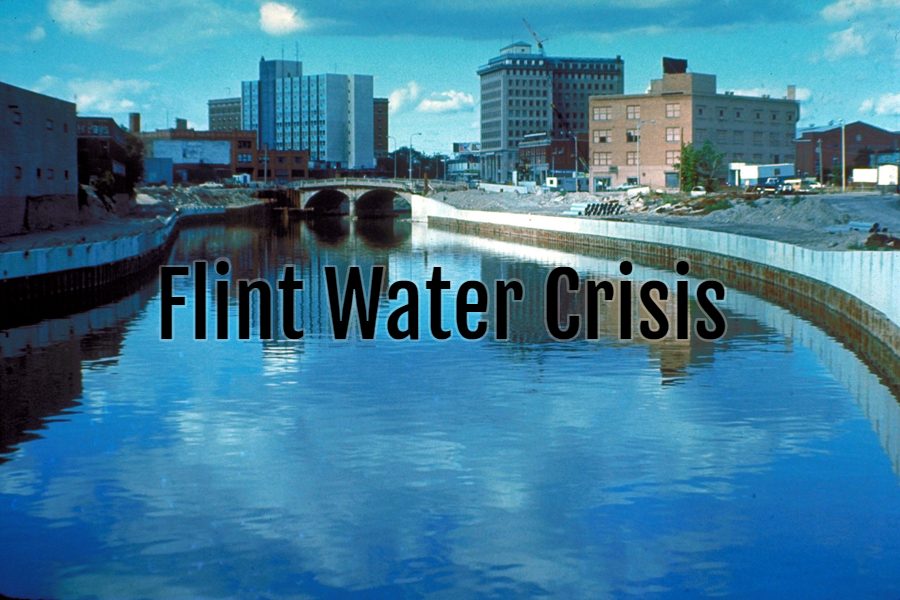Flint water crisis still affects Kearsley students
May 17, 2018
IMAGE / Wikipedia
The Flint water crisis began in April 2014.
Now, over four years later, the crisis is continuing to put stress on the citizens of the city.
Some KHS students and their families have been affected since the crisis began.
Though the governor says that the water is safe, some citizens are still concerned about their water.
Water crisis continues to wreak havoc in Flint
Flint used to be a bustling city on the rise. It was the thriving home of General Motors, hence the term “Vehicle City.”
Now the atmosphere is similar to that of a ghost town with little activity and an eerie silence.
It also happens to be among the poorest cities in America.
To make matters worse, after the city switched its water system from Detroit’s water system to Flint’s water system in April 2014, the citizens of Flint began to notice discoloration of their water and the side effects as a result of using it.
People began to develop rashes, lose hair, and contract illness and diseases, raising suspicions of tainted water.
There were 15 recorded deaths resulting from the affects from the water.
Many public figures such as Michael Moore, documentary filmmaker, fought against the problem. This helped to support the citizens and encouraged coverage from news organizations.
While CNN and other broadcasts brought up the topic, more important groups did not.
It took the local, state, and federal governments over a year to even recognize the issue.
In 2015, Virginia Tech University discovered the unsafe levels of lead in residents’ homes.
It was to everyone’s dismay that by not putting anti-corrosive agents — which would prevent the corrosion in the pipes — into the water supply, the government was corroding the lead pipes and polluting the water. Over 100,000 people, all who were using water for day-to-day activities, were affected.

Mrs. LeAnne Walters’ home was labeled as ground zero for lead contamination.
Mrs. LeAnne Walters, an alumna of KHS and former editor at The Eclipse, played a key role in getting to the bottom of the crisis.
During this time, Walters stated that her home was ground zero for lead contamination.
The water in her home tested at 104 parts per billion lead in February 2015 while the federal law for quality drinking water requires that the absolute maximum should be less than 15 ppb.
But it got worse.
Just four months later in June, Walters’ water tested at more than 13,000 ppb.
Walters and her family aren’t the only citizens to have been plagued by the unbearable conditions.
Children and adults alike have been poisoned by the lead in Flint’s water, making it difficult to live inside their homes. They use the water to bathe, cook, brush their teeth, and feed their pets.
In order to stay safe from the contaminated water supply, Flint citizens were able to pick up bottled water from water supply stations. Flint citizens were able to pick up free bottled water beginning in January 2016, and this program ended in April 2018.
After more than four years of this terrible situation, the Flint community is still fighting back.
KHS students, families cope amid water crisis
Even though the state of Michigan says Flint’s water is safe, many residents are still weary of it, which includes many KHS students and their families who were affected by the water crisis.
Three of those students shared their stories with The Eclipse.
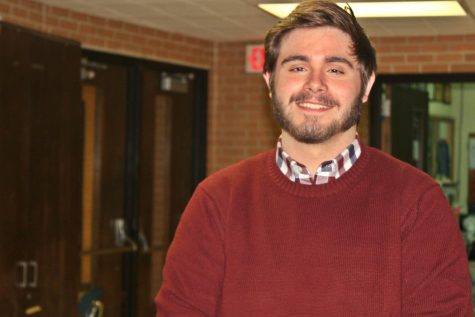
Senior Chase Lang and his family have lived with Flint water for the entirety of the crisis. The Langs always suspected something was wrong with their water.
Chase Lang, senior
While senior Chase Lang’s water was contaminated with lead, Lang is one of the more fortunate people affected by the crisis.
Lang’s father purchased an osmosis filter, which allowed his family to drink the water from the tap.
“We have an osmosis filter for drinking,” Lang said. “We get water from drop-offs or from the store. Sometimes my dad buys it. Sometimes he doesn’t.”
Regardless, they still drink the bottled water they receive, though that is all they use it for.
“We primarily use bottled water for drinking,” Lang said. “For showering and all that, we don’t care if we use the water.”
Luckily, showering and cleaning with the water has not affected Lang’s health in any way.
However, for Lang’s family, they’ve always believed something was up with the water.
“We’ve always known the water was gross — it’s city water,” Lang said. “But we didn’t use bottled water until about two years ago.”
Maddie Alpin, sophomore
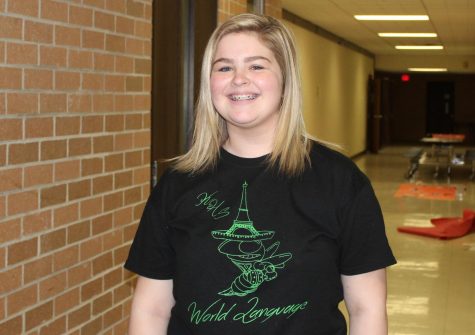
Sophomore Maddie Alpin and her family moved into a home with corroded pipes during the Flint water crisis.
Sophomore Maddie Alpin hasn’t always had water from Flint; her family used to live in a different home.
Unfortunately for her family, the water had already been contaminated by the time they moved here.
“We moved to our house and already had lead in the water,” Alpin said.
Because her water was no good, Alpin’s family bought water from the grocery store and got it from water stations around the city.
“We buy our water, but we also go to drop-offs,” Alpin said.
Alpin keeps herself safe by refusing to use the water to shower.
“I use bottled water to wash my face, and I don’t shower at home,” Alpin said.
Quashayla Johnson, senior
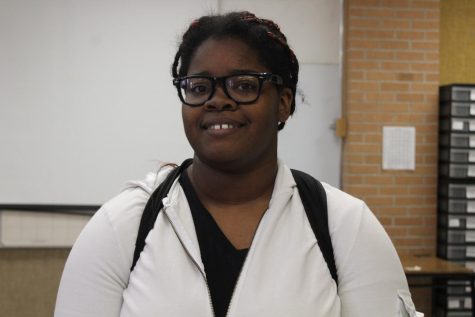
Senior Quashayla Johnson’s 10-year-old sister, Quamora Fields, developed a rash from the water.
Like Lang and Alpin, senior Quashayla Johnson’s water had been contaminated.
But on the contrary, her family didn’t know the water was bad beforehand.
“We found out on the news,” Johnson said. “Our water had changed color and my little sister started to get itchy.”
Johnson’s little sister Quamora Fields, 10, had developed a rash.
“It was on her arm, and it was red and bumpy, plus dry,”Johnson said. “We had to take her to the doctor’s. We thought she was allergic to something, but it came from the water.”
Once her family discovered the bad news, they began to use bottled water.
“We had to use it to brush our teeth and make drinks,” Johnson said. “We still make drinks with bottled water to be safe.”
Johnson’s family still showered in their water, but had a way to lessen its effects.
“The thing is, we didn’t stay in the water that long when the lead was in our water so it wouldn’t soak into our skin,” Johnson said.
Fortunately, Johnson’s family switched to Detroit water shortly after finding out about the water’s effect on her younger sister.
“That’s when we changed our water,” Johnson said. “After we changed it, we’ve been better, to be honest.”
Flint’s water through state’s eyes
Flint’s water is clean — says the governor.
This announcement came from a press release from the governor’s office about what has been happening in Flint in regard to the water crisis. The press release was issued April 6.
“We have worked diligently to restore the water quality, and the scientific data now proves the water system is stable and the need for bottled water has ended,” Gov. Rick Snyder said via his office’s press release.
According to Snyder, his ultimate mission since the crisis was to ensure the water in Flint is clean as soon as possible.
“I have said all along that ensuring the quality of the water in Flint and helping the people and the city move forward were a top priority for me and my team,” Snyder said.
In addition, Ms. Tanya Baker, the governor’s deputy press secretary, told The Eclipse in an email that the state will continue trying to improve the city.
“The state continues to focus its efforts on the health, education, and economic development assistance needed to help move Flint forward,” Baker said.
In the press release, the state said more than $350 million of relief from Michigan’s taxpayers has helped the citizens of Flint, including $100 million from the federal government.
Among many things, the funding aided Flint with water quality improvements, pipe replacement, health care, nutritional food distribution, educational resources, and job training and creation.
In Flint’s schools, the state said water testing of unfiltered water showed that 96 percent of the samples tested were at or below the 15 parts per billion federal lead action level. In addition, just under 55 percent of the samples had no lead detected.
Federal regulations require that at least 90 percent of tests come in at or below 15 parts per billion federal lead action level in order for water to be considered safe at a consumption level.
With the above information, the press release also included a disclaimer saying, “tests that were above acceptable levels were at individual points of use within schools and do not reflect overall water quality within any school building.”
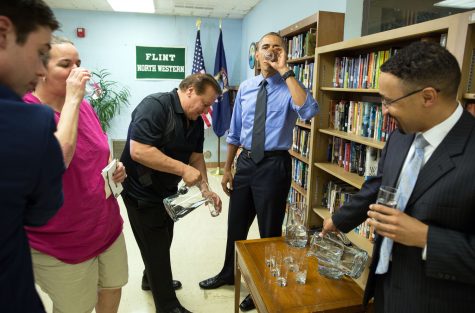
President Barack Obama sips filtered water from Flint following a roundtable on the Flint water crisis at Northwestern High School in Flint, May 4, 2016.
In the past, former President Barack Obama visited Flint to speak in meetings and to the Flint community.
“I’ve got your back,” Obama said, as reported by the White House.
“I will not rest … until every drop of water that flows to your homes is safe to drink and cook with,” Obama told the Flint community.
Overall, Flint officials and politicians have been working hard and spreading awareness since the water contamination surfaced in April 2014 to help in several ways to solve the water crisis.
The water can be considered clean in some areas of the city, but there is still much work to be done to fix the overall problem before it can be announced that the water is safe for everyone.
